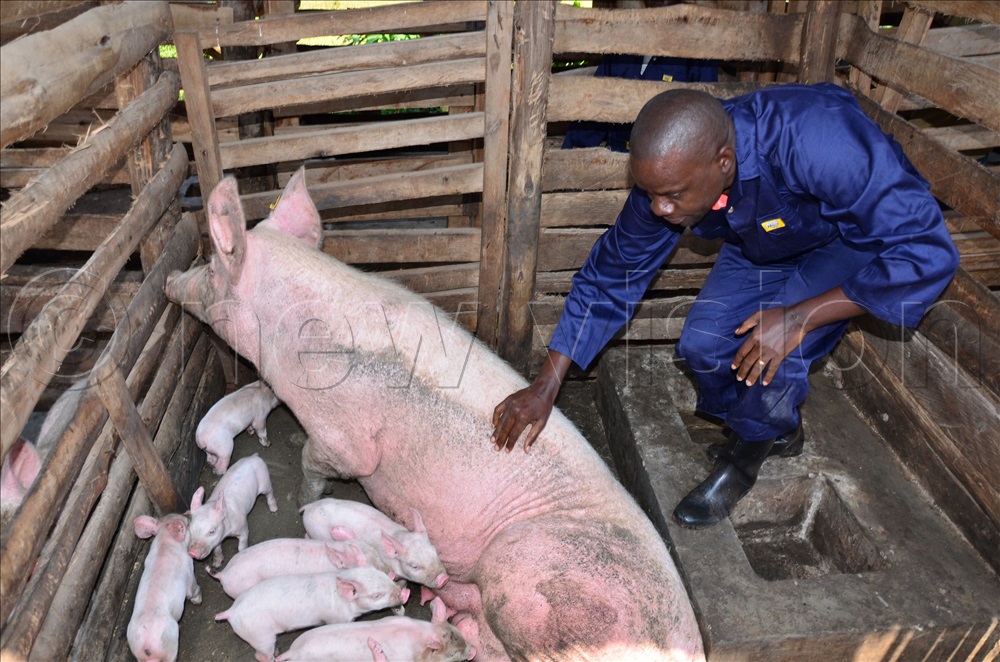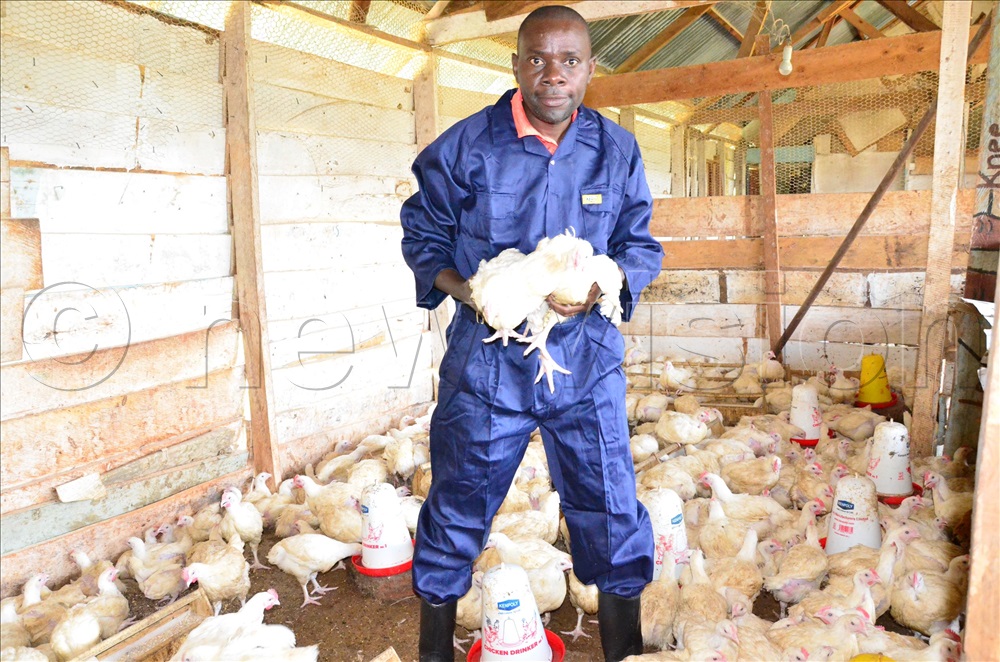By Umar Nsubuga
For the ninth year running, Vision Group, together with the Embassy of the Netherlands, KLM Airlines, dfcu Bank and Koudijs Nutrition BV, is running the Best Farmers’ Competition. The 2024 competitions run from April to November, with the awards in December. Every week, Vision Group platforms will publish profiles of the farmers. Winners will walk away with sh150m and a fully paid-for trip to the Netherlands.
Most people believe that a lot of capital is the only route to successful commercial farming. But not Kenneth Kabagambe and his wife Beatrice.
Kabagambe, a 43-year-old from Nyabugorogoro village, Kyenjojo district, ventured into commercial agriculture with a burning desire to earn a living.
The last thing a young graduate wants to do is retreat back home to the village and commit the rest of their life to farming. But that is exactly what Kabagambe did after obtaining a degree in business administration from Makerere University.
“Most youth cry that they do not have capital. To me one needs more of the brains than cash to get started in commercial farming,” he says.

Kabagambe is now the director of Kenbeat model farm.
How he started Born in Kyenjojo district, Kabagambe’s inspiration to start farming was from his experience of his family lacking food while he was a child.
After graduation in 2008, and landing a job at the district, Kabagambe started saving every coin with his wife, Beatrice. In 2010, the couple embarked on farming, starting with a maize project.
“I have no regrets about going into farming. We saved and also got a loan to make sh12m with my wife. We then bought four acres of land. Our target was growing maize,” Kabagambe says.
The couple did a lot of research on maize, which was no surprise that the project was successful. They sold the harvest to traders in Kyenjojo.
For the first three years, they were ploughing back every shilling earned into the farm, which helped them expand.

Today, Kabagambe’s farming ventures have expanded to over 120 pigs, the farm has a 70-tonne dual silo, a seven-acre matooke project, 10 dairy head of cattle, 15 maize acreage and a five-acre coffee plantation.
Piggery
In 2020, Kabagambe and his wife chose piggery because there was demand for pork in the district. They bought five piglets at sh300,000. When the pigs matured, they sold each between sh300,000-sh400,000.
The money was used to buy more piglets. The Kabagambes ventured into coffee growing. Of the 120 pigs, 20 are kept as the parent stock for breeding, while others are fattened for sale every after six months.
On average, the pigs produce about 10 piglets. They litter twice a year, producing about 300 to 400 piglets. Sometimes, the Kabagambes sell the piglets at one month old at sh300,000 each.
“Those that are kept for pork mature at six months and we sell them off to proprietors of pork joints in the district. Some of our buyers come from the DR Congo. An old pig can go for as high as sh2m or more,” he says.
Kabagambe says some breeds such as boar, landrace, and Yorkshire are all strictly for breeding. To maintain the quality, they now import the mother breeders from South Africa.
Matooke project
The banana shamba sits on six acres, and they have planted another young plantation on two more acres.
Martin Barungi, a neighbour, says Kabagambe’s matooke plantation has led to the rapid growth of the village. He adds that it is the huge size of the bunches that makes Kabagambe’s produce stand out.
“On average, most bunches of matooke from other farms weigh 20-25kgs, but Kabagambe’s is over 40kgs,” Barungi explains.
Kabagambe plants about 400 suckers on an acre of land.
He then digs canals to preserve water for the bananas whenever it rains, and also irrigates during dry seasons.
To enhance the fertility of the soil, he uses organic material for mulching.
Kabagambe says he harvests about 40-50 big bunches every 10 days, plus a few small ones.
A bunch goes for between sh20,000 and sh25,000, and he earns about sh1m per month. herd structure The current herd is divided into three.
One is the milking herd which comprises five cows. Then there is the breeding herd, which includes bulls for breeding.
The last herd comprises heifers that are sold off to other farms, plus calves. A mature bull is sold at between sh4m to sh5m.
Our total milk production during the wet season is more than 50 litres and 55-60 litres during the dry season.
According to Beatrice, the average cost of a litre of milk is sh500 during the wet season and sh1,000 in the dry season.
She adds that the farm has facilities that make it modern.
“You cannot practise farming using old techniques and expect to get money,” she says.
The farm has piped water and two boreholes which residents also use.
“If you do not have water, your animals will die,” she notes.
The 10,000 litre tanks are located in different parts of the farm. The animals, therefore, do not have to travel long distances for water.
The couple decided to plant their own maize on a large scale so that issues concerning maize and brand, are solved. With their maize mill, they have simplified work on their farm.
They grow maize on 14 acres and do not sell it raw. They process it in different units. Even when they make losses in the gardens, they keep all the maize in the 70-tonne dual silo.
Farm security
“The best security of a farm depends on how you deal with your neighbours and workers. When people know that they benefit from the farm, there is no way they will turn around and steal,” Kabagambe explains.
He has, therefore, turned his farm into a learning centre. Kabagambe also motivates his workers by giving them chicken, ducks and piglets.
Plans
Kabagambe plans to turn their farm into a model one in two years.
“I want to promote farming for export by empowering a bigger section of the community with knowledge on commercial farming,” he says.
Challenges
Beatrice says one of the main challenges is getting stable farm labour. She adds that because of this, the top managers must be on the farm most of the time to keep a close eye and monitor everything.
Expensive livestock drugs, and intrusions on the farm by wild animals is another challenge.
“Also, the weather is not predictable. Because of this, sometimes we plant early. This makes some farm activities expensive. Initially, we knew we could depend on rain water, but today, without irrigation, it is hard to get a good harvest,” she says.
The poultry farm
The chicken farm is located far away from the main farm. There are four main structures. Each has the capacity of 1,000 birds. The structures were constructed using timber for the walls and iron sheets for roofing.
The Kabagambes cemented the floor because they realised that it creates more warmth for the chicken. He says the project sits on one acre and the structures cost over sh10m.
“We left space between the structures, because it ensures easy access around them,” he says.
The feeding containers and troughs for each house are not mixed, which helps in preventing the spread of diseases. Kabagambe keeps 2,000 broilers, and 5,000 kuroilers. He is set to make 500 layers.
Kabagambe says on average, they spend sh500,000 on feeding the birds per day. To cut costs, Kabagambe acquired a feeds mill at sh6m and now manufactures their own feeds.
The other expenses in the poultry, the farmer says, include veterinary services that cost sh400,000 to sh500,000 per month for a visiting veterinary doctor, among other costs.





